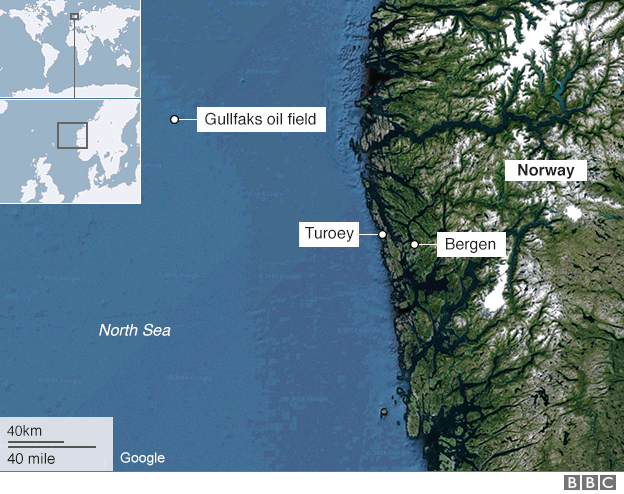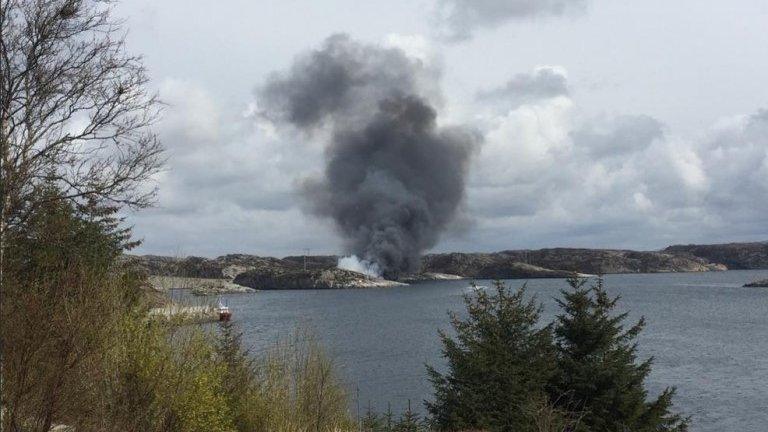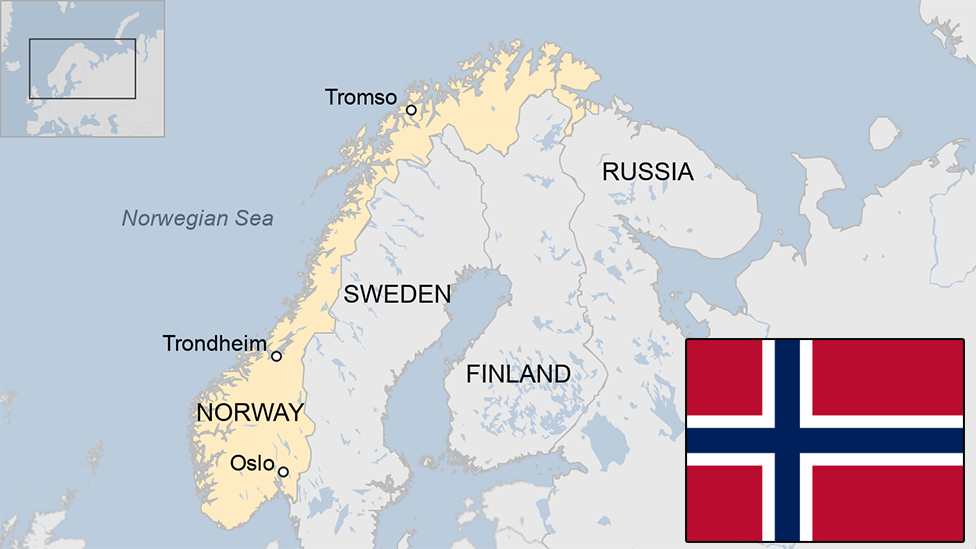Norway helicopter crash: Super Puma flights suspended in UK
- Published
Emergency services try to reach the site of the crash
All UK commercial passenger flights using the Airbus EC225LP helicopter - or Super Puma - have been grounded by the Civil Aviation Authority (CAA) following a fatal crash in Norway.
One Briton, 11 Norwegians and one Italian who were on board the Super Puma helicopter are presumed dead.
The CAA said the restriction did not apply to search and rescue flights.
BP and Statoil have also suspended the use of the aircraft model, so it is unable to carry oil and gas workers.
"Following the accident, the UK CAA has issued an instruction to stop any commercial passenger flights by UK operators flying the Airbus EC225LP helicopter," a CAA statement said.
"This mirrors action taken by the Norwegian CAA."
Mick Borwell, of trade association Oil & Gas UK, said it would work with helicopter operators to support offshore operations and its workforce during the period of investigation.
'Aircraft destroyed'
Super Pumas are responsible for many of the 140,000 helicopter passenger flights in the UK each year, but the CAA was not able to provide a breakdown of exactly how many.
The Super Puma that came down in Norway was flying from the Gullfaks oil field to Bergen, a centre for the North Sea oil and gas industry, when it crashed near the small island of Turoey.
A major rescue operation was launched but ended within hours of the crash. No survivors were found.
Reports say the helicopter was destroyed.

The UK's Air Accidents Investigation Branch is sending a team to Norway because it has investigated a number of crashes involving helicopters operating to and from offshore oil and gas fields in recent years.
In 2012, EC225 Super Puma helicopters crashed in two incidents in Scotland - one off Aberdeen and another off Shetland - that were both blamed on gearbox problems.
In both cases, all passengers and crew were rescued. EC225s in the UK were grounded following the crashes but given the go-ahead to resume flying in 2013.

Airbus (formerly Eurocopter) EC225 Super Puma
Widely used in offshore oil and gas industry around the world
More than 220 in service
Can also be used in search and rescue and firefighting roles
Carries 19 passengers, plus two crew, and can fly for up to five-and-a-half hours
Safety features include self-deployable emergency flotation device, and traffic collision and avoidance system
Source: http://www.airbushelicopters.com/website/en/ref/H225_40.html

- Published29 April 2016

- Published28 March 2023
